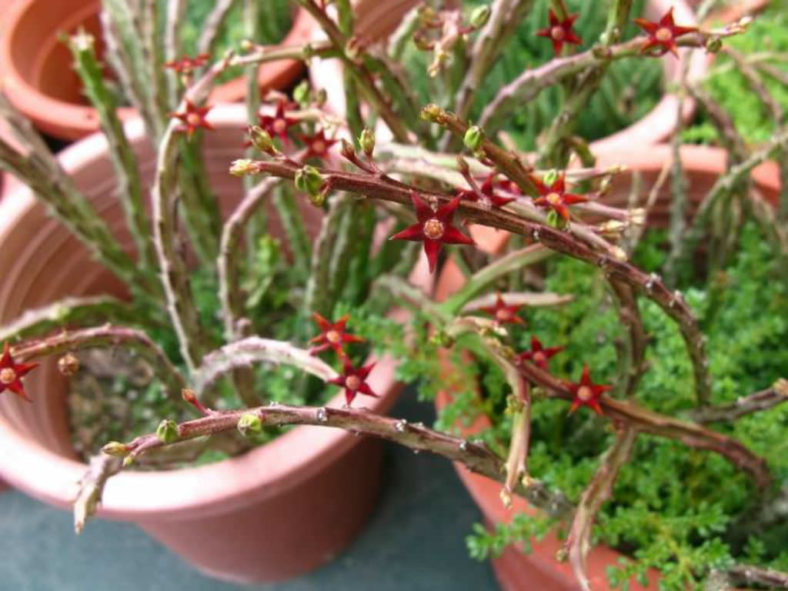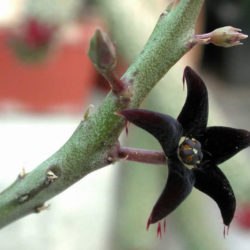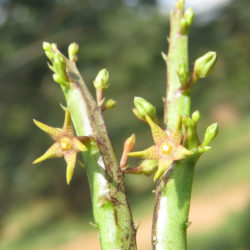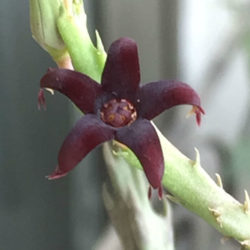Scientific Name
Caralluma stalagmifera C.E.C.Fisch.
Common Name(s)
Dark Purple Caralluma
Synonym(s)
Ceropegia stalagmifera
Scientific Classification
Family: Apocynaceae
Subfamily: Asclepiadoideae
Tribe: Ceropegieae
Subtribe: Stapeliinae
Genus: Caralluma
Description
Caralluma stalagmifera is a succulent plant with long, fleshy, sparsely branched stems with tiny, tooth-like leaves. It grows up to 16 inches (40 cm) tall, forming a dense clump. The stems are greyish-green with brown mottling and whitish ribs. They are quadrangular and can reach 24 inches (60 cm) in length and 0.8 inches (2 cm) in thickness. The leaves are stalkless and up to 0.2 inches (5 mm) long.
The flowers are deeply lobed, up to 0.5 inches (1.2 cm) long and 0.3 inches (0.8 cm) across, dark purple with purplish yellow at the tips of the lobes. After 8 to 12 days, the flower color changes to brownish-green. The basal parts of some flowers are yellowish with dark markings at the lobes. Flowering occurs from winter to summer. The fruits are paired follicles that are purplish streaked, round in cross-section, tapering towards apex, up to 5.2 inches (13 cm) long and 0.4 inches (1 cm) in diameter.
Origin
Caralluma stalagmifera is native to southern India.

Hardiness
USDA hardiness zone 10a to 11b: from 30 °F (−1.1 °C) to 50 °F (+10 °C).
How to Grow and Care
Stapeliads are relatively easy to grow. However, they should be treated as outdoor plants as they will easily rot indoors and cannot flower without exposure to outdoor temperature fluctuations. They should be grown under cover so that watering can be controlled. They require a reasonable amount of sunlight to promote flowering and maintain a well-shaped plant. Very shady positions will produce very poor flowering. Stapeliads come from climates where they survive extremely high temperatures in the summer months, so most growth is in spring and autumn, with flowering in the fall when the weather starts to cool down.
The easiest and best way to propagate Stapeliads is from stem cuttings which can be taken virtually throughout the year. Seed is also a method of propagation. They all need extra good drainage. Stapeliads are shallow-rooted, and a collection of them can be planted up nicely in a wide, shallow bowl. When planting, it is a good idea to allow the roots to be buried in soil and then put pure gravel or sand around the base of the plant to prevent rot.
See more at How to Grow and Care for Stapeliads.
Links
- Back to genus Caralluma
- Succupedia: Browse succulents by Scientific Name, Common Name, Genus, Family, USDA Hardiness Zone, Origin, or cacti by Genus
Photo Gallery
Click on a photo to see a larger version.


